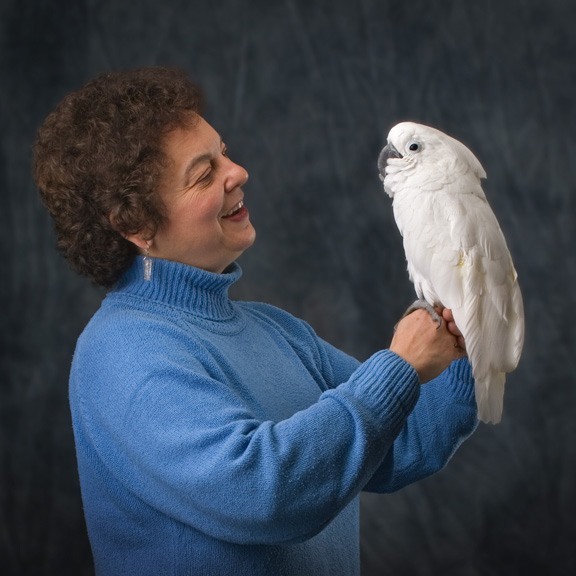Dog Friendships that Defy Nature
Share

 Animal shelters often try to adopt out “bonded pairs,” dogs that have been living together or have a strong connection. But the Humane Society of Silicon Valley (HSSV) in California didn’t quite know how to handle an unusual twosome that ended up in its care recently. Mama, a 7-year-old Shetland sheep dog mix, and her best buddy Kiki, a 7-year-old short-haired gray and white cat, had grown up together.
Animal shelters often try to adopt out “bonded pairs,” dogs that have been living together or have a strong connection. But the Humane Society of Silicon Valley (HSSV) in California didn’t quite know how to handle an unusual twosome that ended up in its care recently. Mama, a 7-year-old Shetland sheep dog mix, and her best buddy Kiki, a 7-year-old short-haired gray and white cat, had grown up together.
“They had been living together for seven years,” says Beth Ward, vice president of animal and customer care at HSSV. “They slept together. They ate together. They played together. They were the perfect odd couple.”
Mama and Kiki had to be separated initially because the shelter houses cats and dogs in different facilities. But they were eventually reunited when the shelter found a family willing to adopt a pair of pet friends that defies nature.
[bt_youtube url=”https://www.youtube.com/watch?v=vnVuqfXohxc” width=”600″ height=”400″ responsive=”yes” autoplay=”no”][/bt_youtube]Unlikely Cronies
Friendships between dogs and cats — and sometimes between dogs and other animals, such as ducks and birds and bunnies — are seemingly unnatural. Let loose on a playground, a dog will give in to predatory instincts and give chase to a cat, squirrel or bird.
It’s important for pet owners to understand the differences in the social order between species. Cats are more elusive and will approach others when they feel the need. Dogs are pack animals and want to be as close to people as possible. But things can change when domestic animals are brought up together, experts say.
“When you think of the domestic dog and cat, you’re really talking about socialization,” says Bonnie Beaver, past president of the American Veterinary Medicine Association and a professor of veterinary medicine at Texas A&M University. “If, as a puppy and a kitten, they are around the opposite species, they usually do fine. It really has to do with how they’re raised.”
How to Encourage Friendships
If you have a 4-year-old dog that has never been around a cat before, the odds are that bringing a cat into the house will be an uphill battle. But nothing is impossible. Laura Fulda, another HSSV vice president, had three large dogs when she brought a stray cat from the shelter home. “Before I knew it, they were all sleeping on the bed together,” Fulda laughs.
Fulda says she followed the guidelines developed by animal behaviorists and published on the shelter’s website. Here are five ways to help your pets feel the love:
- Felines make the first move Letting a big dog approach a small cat is a recipe for trouble. The cat is going to tolerate only a bit of sniffing before running away. That will only convince Rover to chase. Let the cat make the first move so it can learn to trust you and that strange, drooling beast.
- Keep your dog on a leash During initial encounters, keep your dog on a tether — especially if the dog isn’t trained to come to a halt when you say, “No.” The HSSV also suggests keeping a squirt bottle handy to spray the dog in the face lest it start annoying the kitty.
- Provide an outlet for the “chase” instinct Make sure your dog fulfills its natural prey instinct and gets to chase something — a ball, Frisbee, or a squirrel in the yard. Exercise can calm your pup and ensure better behavior indoors, especially with your cat.
- Let the cat hide, if need be Dogs want to run up and sniff strange new creatures. Felines investigate more gradually. “Keep them separated with a baby gate,” Ward suggests. “Make sure the cat always has an escape route.” Before you know it, the cat may be leaping over voluntarily to spend more time in the canine zone.
- Praise positive interactions Make sure your pooch gets lots of positive feedback for good behavior. A happy, “Good dog,” and a playful scratch might be just the encouragement a dog needs.
Making a Good Match
When teaching a dog a new trick — such as learning to tolerate or even to like a new pet in the household — ask yourself a few questions:
* Is your home big enough for two pet species?
* If you have a dog, was that dog raised with cats?
* What type of temperament does your dog have?
* Has the new cat been around dogs before?
“Not every dog is going to get along with cats and not every cat is going to get along with dogs,” Ward says.
Sometimes other creatures are in the mix. The HSSV was presented with an even more difficult adoption situation a few years ago. “We had a dog, a cat and a duck that were bonded,” Ward recalls. Unable to find one family willing to take all three, the unusual bedfellows had to be separated. Ward says, “We had to deal with depression in all three of these animals.”









